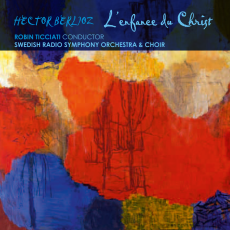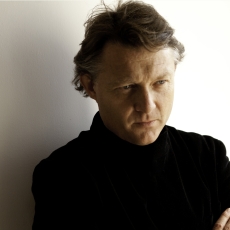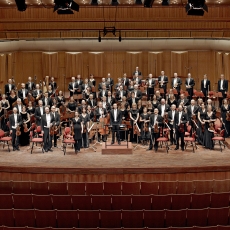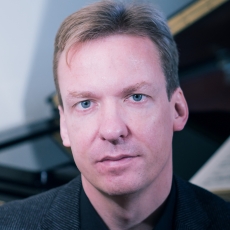Robin Ticciati - Swedish Radio Symphony Orchestra - Berlioz: L'enfance du Christ - SA-CD.net
Robin Ticciati's highly regarded and refreshing progress through Berlioz with the Scottish Chamber Orchestra (Berlioz: Symphonie Fantastique - Ticciati, Berlioz: Les nuits d'été & La Mort de Cléopâtre - Ticciati) now reaches the triptych of L'Enfance du Christ. He conducted L'Enfance with the SCO in February 2010, but this recording took place on 11th & 14th December 2012, with the Swedish Radio Symphony Orchestra and Chorus at the Berwaldhallen, Stockholm. The principal soloists were Véronique Gens (soprano, Mary), Alastair Miles (bass, Herod & Father of the Family), Yann Beuron (tenor, Narrator), and Stephan Loges (baritone, Joseph). Of the soloists, only Yann Beuron performed at the Edinburgh concert...
I listened to Ticciati's version while referencing two of the finest readings, those of Colin Davis's first recording and Matthew Best's Corydon Singers and Orchestra. The Swedish Radio Chorus and Orchestra respond with great concentration in realising the conductor's seemingly innate gift for understanding the Berlioz idiom. The work is not spectacular or histrionic, as are most of Berlioz's major works. The music is mostly quite slow. The orchestrations follow what the composer called his 'antique' style, with chamber orchestra-like minimalism, mostly strings and double wood wind, with no heavy brass and rare use of the horns. It is also mostly quiet, with very few passages reaching double forte, but several times Berlioz requests playing as softly as ppp, executed here perfectly by all musicians concerned.
The word which came frequently to my mind was 'subtle'; Ticciati drawing much intimate and delicately shaded playing and singing from the Swedish forces and the soloists. Also notable is the very French, or rather Berliozian, sound of orchestra and choir, the particular balance of colour drawn from the spare orchestral palette. This applies particularly to the woodwind (which also includes the cor anglais), being voiced like the reeds of a French organ. This approach is enchantingly different to the general metropolitan over-glaze produced by many of the larger, high-profile orchestras and choirs. French pronunciation is generally very good, and well-articulated into the bargain.
All the soloists show evidence of understanding and vocally imaging the emotions of Berlioz's deeply romantic characters in his own libretto, where his imagination goes much further than the limited biblical accounts of the Nativity. His story revolves around the apocryphal flight of the threatened Holy Family to the Roman-governed Egyptian town of Sais. This allows him to picture the sheltering family in a Roman villa, the travellers being entertained by a trio of two flutes and a harp, played with the utmost grace and delicacy by soloists from the orchestra (and one of Berlioz's very few writings of pure chamber music).
Judging from instructions and remarks in Berlioz's score, he envisaged that his quasi-operatic drama should be presented with certain spatial changes of position, particularly of the singers. For example, during the whole of Part 1, he wanted the male choristers to stand alone on one side of the stage in sight of the public, while the female chorus members stood behind the chorus leader at the harmonium or organ. At the beginning of Part 2, they are to take their places on the stage opposite the men, with the exception of four of each of the two voices, which are to remain behind the stage to the end, to sing the Alleluja and Amen. He recommends that this female semi-chorus should be in a room behind the stage (or behind curtains), and during the diminuendo, the choristers should turn their backs to the stage in the last five bars, as a form of damping.
...Linn's production is attractive. The two discs rest in two gates of a three-gate Digipak, the end gate being a slip case for the substantial (59 page) booklet. Per Kirkeby's large abstract painting of The Flight Into Egypt (1996) is aptly used in photographic extracts on the front and rear covers, its vivid colours being most attractive. Berlioz scholar Hugh Macdonald provides a fascinating essay on the origins of the work, and Ben Quosh presents another essay: an absorbing theological perspective...I greatly admired Ticciati and his Swedish Radio forces in their subtly played and sung L'Enfance de Christ, which sounds so French and oozes with idiomatic Berlioz...






